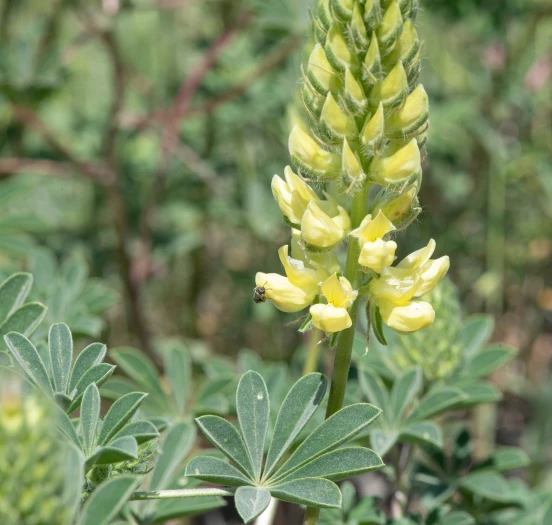Pale Yellow Lupine
(Lupinus luteolus)
Pale Yellow Lupine (Lupinus luteolus)
/
/

© Don Loarie
CC BY 4.0
Image By:
© Don Loarie
Recorded By:
Copyright:
CC BY 4.0
Copyright Notice:
Photo by: © Don Loarie | License Type: CC BY 4.0 | License URL: http://creativecommons.org/licenses/by/4.0/ | Uploader: dloarie | Publisher: iNaturalist |












Estimated Native Range
Climate Requirements for Rock Hill, South Carolina
| This Plant | Your Site | Plant Suitability for Your Location | ||
|---|---|---|---|---|
| • Precipitation | 5" - 87" | 48" | Aquatic | Aquatic |
| • High Temp. | 70°F - 100°F | 90°F | Your summer temperatures are normal for this plant. | Excellent |
| • Low Temp. | 19°F - 45°F | 31°F | Your winter temperatures are normal for this plant | Excellent |
This plant may not grow well at your location - your precipitation is too high.
Summary
Lupinus luteolus, commonly known as Pale Yellow Lupine, is an annual herb that is native to the coastal mountain ranges of Oregon and California. It is often found in open habitats such as coastal prairies, grasslands, and disturbed areas. This species can vary greatly in size, ranging from 12 inches to over 5 feet tall, depending on environmental conditions. The palmate leaves are composed of 7 to 9 hairy leaflets, which give the plant a textured appearance. The inflorescence is a raceme of pale to bright yellow flowers that bloom in the spring and early summer, and these flowers can sometimes exhibit blue or pinkish hues. The fruit is a hairy legume pod that typically contains 2 seeds, which are dispersed when the pod dehisces.
Pale Yellow Lupine is valued for its nitrogen-fixing abilities, which can improve soil fertility, making it a beneficial plant for restoration projects and naturalized garden settings. Its vibrant yellow flowers are also attractive to pollinators such as bees. In cultivation, it prefers full sun to part shade and requires well-drained soils. While it is drought-tolerant once established, it benefits from moderate watering. Pale Yellow Lupine is not commonly used in formal garden settings but is excellent for wildflower meadows and ecological gardens. It is relatively low-maintenance but can be susceptible to fungal diseases in wet conditions.CC BY-SA 4.0
Pale Yellow Lupine is valued for its nitrogen-fixing abilities, which can improve soil fertility, making it a beneficial plant for restoration projects and naturalized garden settings. Its vibrant yellow flowers are also attractive to pollinators such as bees. In cultivation, it prefers full sun to part shade and requires well-drained soils. While it is drought-tolerant once established, it benefits from moderate watering. Pale Yellow Lupine is not commonly used in formal garden settings but is excellent for wildflower meadows and ecological gardens. It is relatively low-maintenance but can be susceptible to fungal diseases in wet conditions.CC BY-SA 4.0
Plant Description
- Plant Type: Herb
- Height: 1.5-3 feet
- Width: 1-2 feet
- Growth Rate: Rapid
- Flower Color: Pink, White, Yellow
- Flowering Season: Spring, Summer
- Leaf Retention:
Growth Requirements
- Sun: Full Sun, Part Shade
- Water: Medium
- Drainage: Fast, Medium, Slow
Common Uses
Bee Garden, Butterfly Garden, Drought Tolerant, Erosion Control, Low Maintenance
Natural Habitat
Native to coastal prairies, grasslands, and disturbed areas within the coastal mountain ranges of Oregon and California
Other Names
Common Names: Yellow Lupine, Pale Yellow Lupine, Golden Lupine
Scientific Names: Lupinus luteolus, Lessertia glandulifera var. albiflora, Lessertia nemaclada var. albiflora, Lupinus bridgesii, Lupinus bridgesii, Lupinus luteolus var. albiflorus, Lupinus milo-bakeri
GBIF Accepted Name: Lupinus luteolus